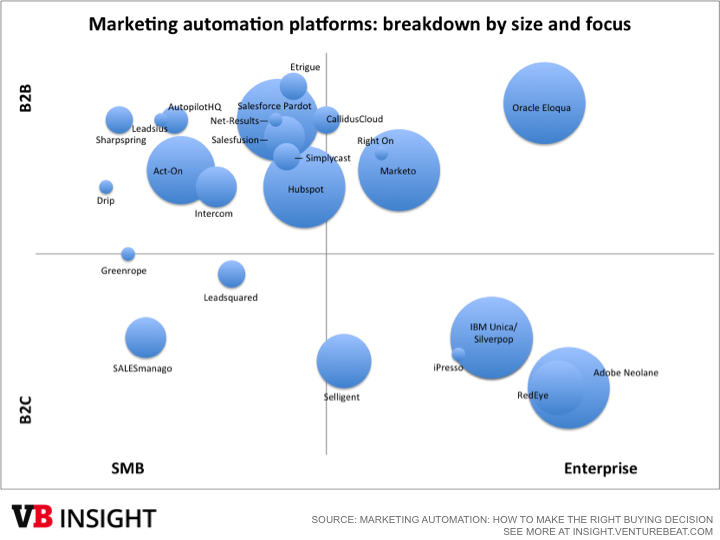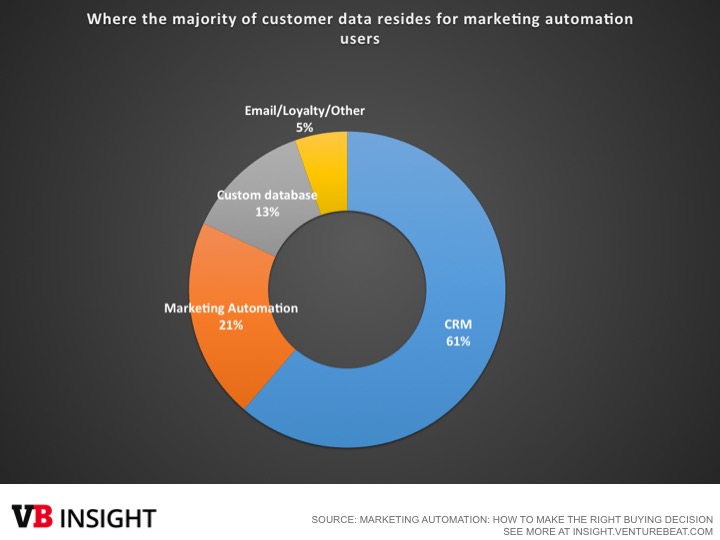Marketing automation vendor Act-On has a new CEO. Andy MacMillan took on the new role last month, after holding several roles at Salesforce, including COO of Products. I talked to MacMillan about why he took the new role and how he sees CRM and marketing automation evolving.

As marketing takes up more of the customer journey, marketers aim to scale engagements, while making them more personalized.
When it comes to customer management and engagement, it’s important to understand where CRM stops and marketing automation begins. MacMillan said:
AI Weekly
The must-read newsletter for AI and Big Data industry written by Khari Johnson, Kyle Wiggers, and Seth Colaner.
Included with VentureBeat Insider and VentureBeat VIP memberships.
CRM helps facilitate a lot of manual engagement for people who are customer facing, primarily in sales and support. They log interactions, forecast, and work on individual cases. It’s hugely important, because people won’t be moving away from customer service or sales any time soon.
Marketing automation helps scale those interactions. MacMillan put it this way:
CRM was about designing a process to go through; marketing automation helps automate those engagements. A lot of companies are trying to figure out, “How do I have more personalized engagements across the life cycle?” Well, CRM will continue to be a vehicle that tells someone to go do something manual and report back, but marketing automation will be the system that automates and coordinates the engagement.
And, said Act-On’s new chief, “Most marketing automation tools focus on demand gen and lead gen. Those are important, but I’m hearing a lot of marketers saying they want to drive more engagement across the life cycle.”
More businesses than ever are subscription businesses, meaning more revenue is coming from existing customers than from signing new prospects. As a result, many companies are trying to figure out how to maximize retention.
MacMillan is aiming Act-On to address the need for retention and not just demand-gen. “For example, if I am rolling out a new product feature,” he said,
I should engage existing customers the same way we would prospects. I want to track how many customers engage with my outreach, actually click through and learn about the new feature, and how many actually install or turn on the feature. And for those who don’t, I want to re-engage them to make sure they get the most out of what I’m offering. Marketers have done this for new prospects for years but not for existing marketers.
To be fair, most marketing departments are more focused on demand generation than retention. Investment in retention is typically much lower in headcount and technology. But if retention marketing can be automated to a greater degree, businesses stand to gain quite a lot.
In fact, marketing departments often have two or three divisions — which may include a head of demand-gen, a head of marketing communications, and a head of customer marketing — but those divisions are not always being equipped with the same tools. MacMillan thinks marketing automation isn’t being used broadly enough by most marketing departments.
One reason for broader adoption is in the data.
Marketing automation systems have been designed from the get-go to act on a loose collection of varied signals that can be flexibly acted on. As a result, an increasing number of marketers are using marketing automation as their primary database for customer data management. CRM still dominates, but the nature and structure of customer data today is changing, becoming increasingly complex and unstructured. And that favors marketing automation.

For example, as video becomes more important, MacMillan wants to let marketers bring in more detailed data. Traditional marketing automation might have allowed marketers to understand whether someone landed on a page and if they clicked “play.” But, he said, “Compare that with Netflix, which collected details on whether you played, how long you played, did you pause it, did you play part of it again, etc. Data capture should get more detailed to that kind of level for marketers, too.”
MacMillan expects that all engagement data and scoring data will eventually sit in marketing automation, even if some of it remains in CRM systems.
Generally speaking, marketers will be bringing in more data and acting on a greater diversity of signals — which CRM simply isn’t built to handle. On the other hand, marketing automation needs to provide enough algorithm technology to build better predictive scoring and engagement around those signals. As MacMillan asked, “What is the quality and volume of signals?”

Above: Andy MacMillan, Act-On’s new CEO
In dealing with growing volumes and variety of data, including using it to predict optimal future actions, marketing automation plays an increasingly important role — not just in customer engagement but in customer management.
By taking on his new role as Act-On CEO, MacMillan is placing a big bet on it.
